Read a summary of privacy rights for California residents which outlines the types of information we collect, and how and why we use that information.
Artifacts
The historians and archivists working on the PNC Legacy Project are collecting, documenting, and assessing hundreds of individual artifacts and rare papers. By putting their organizational and research skills to work, they are creating a cohesive and meaningful collection.
Many of the items that have been preserved – such as ledgers, currency, and mechanical devices – may have seemed rather ordinary to those who used them. Now, however, they are being placed in a timeline that not only marks their significance in the history of banking, but also reveals much about the history of these local communities.
A lot of these objects and documents could have just disappeared, but PNC recognizes their historical significance and has provided the means to take care of them. Through this effort, these artifacts can be protected and enjoyed for years to come.
-Mary Beth Corrigan, Historian and Archivist
Collecting and preserving
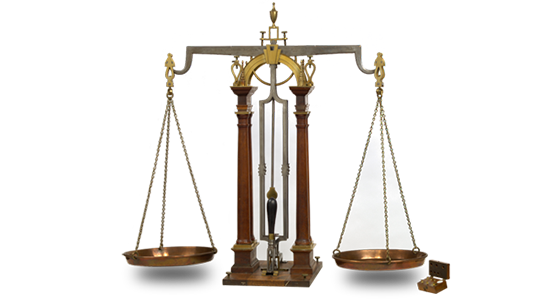
Scale | c. 1820
The National Bank of Fredericksburg
Although they preferred coins to paper notes, banks nonetheless exercised caution in accepting coins for payment. This scale was used at the Farmers' Bank to measure the weight of gold and silver. After the end of the Civil War, The National Bank of Fredericksburg purchased the remaining assets of the failed Farmers' Bank, including this scale.

Advertisement | 1964
Annapolis Banking and Trust
After World War II, Annapolis Banking and Trust increased its services to consumers, particularly in the form of mortgages and installment loans. Advertisements such as this helped promote these services.

Benjamin Franklin Check | 1787
Bank of Delaware
By the time Franklin wrote this check in February 1787, his fellow signers of the Declaration of Independence regarded him as an elder statesman. Only two years earlier, he returned from France where he charmed the aristocracy and intelligentsia and ultimately negotiated an alliance that proved critical to defeating the British during the Revolution.

O.B. McClintock Burglar Alarm | 1927
The National Bank of Fredericksburg
When The National Bank of Fredericksburg installed its time-lock vault, it purchased this alarm for added security. This alarm hung on the bank's outside wall. If someone tried to break into the vault, this alarm went off, alerting neighbors of an unauthorized entry.

Bank Holiday Telegram | 1933
National City Bank
Franklin Delano Roosevelt took office in the midst of an economic crisis in March 1933. Immediately, he initiated an energetic program to stabilize the banking system. It included a bank holiday enabling the evaluation of every bank in the nation, and the creation of the Federal Deposit Insurance Corporation. This telegram from the Superintendent of Banks to the Dollar Savings and Trust, Youngstown, announced the bank holiday beginning March 6, 1933.

Invoice for Francis Scott Key | 1841
Corcoran & Riggs
Invoice from merchant Phineas Janney who sold champagne and port wine to Francis Scott Key, then a lawyer in Georgetown, 1841. Key had written his poem "The Defence of Fort McHenry" in 1814. The poem was put to music and become better known as "The Star Spangled Banner." The song was adopted as the American national anthem in 1916.
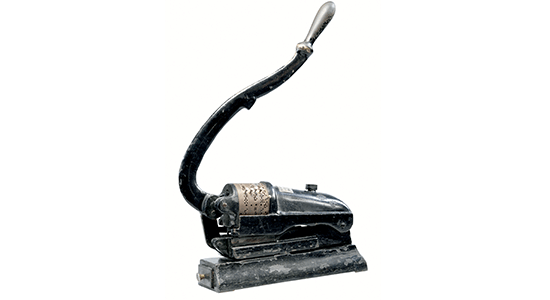
Check Canceller | c. 1895
Farmers & Mechanics Bank
Check cancellers, such as this one, imprinted the bank's number on a check after it was cashed and thereby prevented their re-use.

Stock Certificate | 1890<
Citizens National Bank
When Citizens National Bank first opened its doors, Laurel was a mill town, the only industrial town in Prince George's County, Maryland. Most of its residents worked in one of the mills, the cotton mill or Avondale Flour Mill. The bank issued its first stock certificate in July 1890.
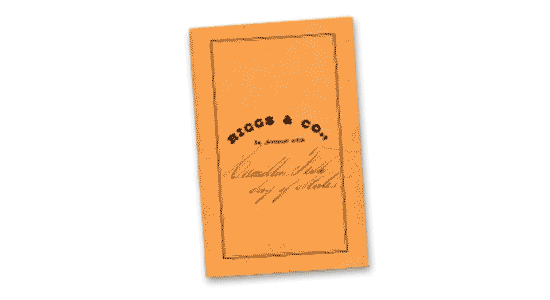
Hamilton Fish Passbook | c. 1869
Riggs & Co.
Bank passbook of Hamilton Fish, who served as Secretary of State between March 17, 1869 and March 12, 1877 under President Ulysses S. Grant. He was Grant's longest-serving Cabinet officer. Fish was also Governor of New York, and a United States Senator from the state.

Counting Room Employees / 1895| 1983
Mercantile Trust & Deposit
In 1884, Baltimore's leading financiers established the Mercantile Trust and Deposit Company. At the time, most banks specialized in a particular type of service. The directors of this new bank wanted to offer more than just trusts, but all banking services under one roof - "a financial department store." The photo above shows Mercantile employees in the bank's counting room.

Check Canceling Hammer and Block | c. 1820
The National Bank of Fredericksburg
After paying checks, banks have always marked them to prevent their re-use. For much of the nineteenth century, banks cancelled checks by placing them on a block and hitting them with a hammer designed for the task. The hammer cut a clean, sharp hole in the shape of an "X" to indicate that the check had been cancelled.

Homemakers' Brochure | c. 1950
National City Bank
In the early 1950s, National City targeted homemakers as a customer base. Their appeal was evident not only in printed matter, but also in their sales pitch. "Home Service Representatives" called on 15,000 homes in Greater Cleveland to introduce women to the banking services offered by National City.

Coin Counter | c. 1890
The Gettysburg National Bank
Banks have always tried to adapt available technology to provide greater efficiency and accuracy to their basic services. This coin counter was used by employees of The Gettysburg National Bank.

Employees Keeping Records | c. 1970
Mercantile-Safe Deposit and Trust Company
As their services expanded, banks mechanized repetitive tasks. This automation not only simplified work but it greatly enhanced record keeping, allowing more detail and accuracy. The photo above shows Mercantile-Safe Deposit and Trust Company employees at work during the early years of the computer age.

Iron Chest | c. 1820
The National Bank of Fredericksburg
Farmers' Bank notes and records were stored inside this heavy iron chest. Kept inside the vault, this chest required special keys to which only the President and Cashier had access. After the end of the Civil War, the National Bank of Fredericksburg purchased the remaining assets of the failed Farmers' Bank, including this iron chest.

ATM Prototype | c. 1981
CCNB
Computer technology enabled banks to install automated teller machines (ATMs) in their bank branches to provide their customers 24-hour access to their deposits. As they installed ATMs, banks allayed the anxieties of their customers. CCNB used this machine, which did not dispense cash, to train employees and customers in the use of automated tellers.

Logo | 1988
Marshall National Bank
Marshall National Bank and Trust used the profile of John Marshall in its logo. Marshall was a native of Fauquier County, Virginia and the longest serving Chief Justice in Supreme Court history. Marshall dominated the Court for over three decades and played a significant role in the development of the American legal system.

Football Trading Cards | 1961
National City Bank
These Cleveland Browns' trading cards reminded young and old sports fans to bank at National City and featured Jim Ray Smith, Ray Rentro and Paul Wiggin, 1961.
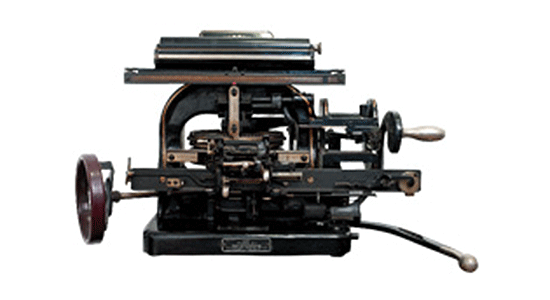
Graphotype | c. 1915
First National Bank of Mechanicsburg
Employees used this graphotype to emboss an address on a tin plate which they filed with the customer's records. When they needed the address, they simply pulled out the plate, inked it, and then pressed out addresses on bank statements, envelopes and account records.

National Currency | 1912
Marshall National Bank
After the Civil War, banks issued national currency, which was backed by federal deposits. Above is a $10 note issued by Marshall National Bank in 1912. The bill includes a portrait of President William McKinley, who was assassinated in 1901.
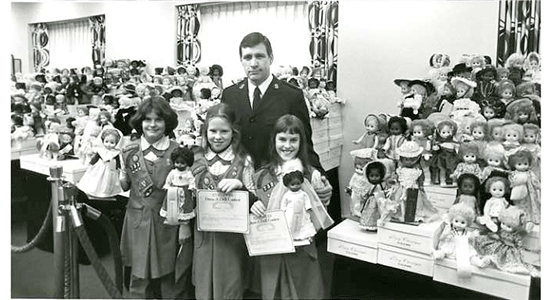
Holiday Dress-a-doll Contest | c. 1980
CCNB
For twenty years at Christmas, CCNB touched a broad segment of the community with its "Dress-a-doll" contest. CCNB employees distributed dolls to contestants who made costumes for the dolls and entered them in the competition. Three Girl Scouts accepted their honorable mention awards from a CCNB employee and Salvation Army officer in 1980.

National Bank Charter | 1865
The National Bank of Fredericksburg
The National Bank of Fredericksburg secured its charter by October 1865, six months after the end of the Civil War. Documents from this period include the list of original stock subscribers, the banks organization certificate, and the charter shown above.

Apple Festival
The Gettysburg National Bank
Banks served as stewards to their communities. Events and programs sponsored by banks helped establish connections with their customers that enhanced their business position. Between 1928 and 1965, The Gettysburg National Bank sponsored an apple show in its bank lobby. Year after year, apple enthusiasts of all kinds converged to celebrate the apple harvest and its role in the regional economy.

Parking Sign | c. 1935
Citizens National Bank
The automobile transformed the landscape of Maryland. As the mills closed, Laurel emerged as an early suburb of Washington and Baltimore. As more customers drove cars, banks built parking lots. Citizens National Bank installed this sign in Laurel during the Depression.
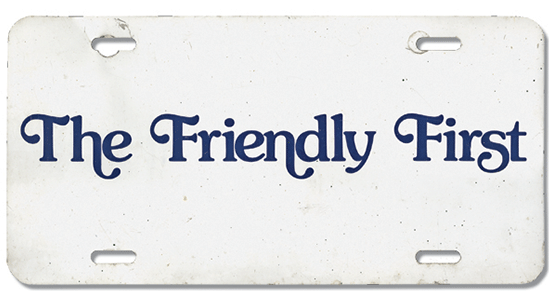
License Plate | c. 1983
Bank of Lancaster County
In the 1970s, the First National Bank of Strasburg adopted the slogan, "The Friendly First," to reinforce its connections to small depositors. Upon changing its name to Bank of Lancaster County, the bank retained the slogan and promoted it with this license plate.

Ground Breaking | 1955
National City Bank
National City promoted itself as the "big and friendly" bank. Several officers break ground at the Babbitt-Lake Shore branch in 1955.

Passbook | c. 1965
Farmers & Mechanics Bank
The affluence following World War II transformed banking. Customers increasingly turned to banks for mortgages, loans, trust services as well as savings and checking accounts. Computers enabled banks to keep more comprehensive records of their customers' activities. Farmers and Mechanics National Bank issued this passbook around 1965.

Posting Machine | c. 1920
The National Bank of Fredericksburg
Throughout the nineteenth century, all bank records were made by hand. These records were time-consuming and prone to errors. Available in the 1910s, posting machines generated typewritten records of deposits and withdrawals that guaranteed accurate arithmetic.

Revolutionary War Currency
Westminster Union Bank
Before the Civil War, there was no centralized currency. Banks tried to accept only sound notes that would be readily accepted by others. Some the affiliates of Mercantile Bankshares Corporation retained these notes and coins, which were found in their vaults. Above is a 50-cent note issued during the Revolutionary War.

Stock Certificate | c. 1882
First National Bank of Strasburg
In May 1863, the citizens of southern Lancaster County applied for a national bank charter a few months after Congress established the national banking system. Initially known as the First National Bank of Strasburg, the bank held charter number 42. This stock certificate was issued in 1882.
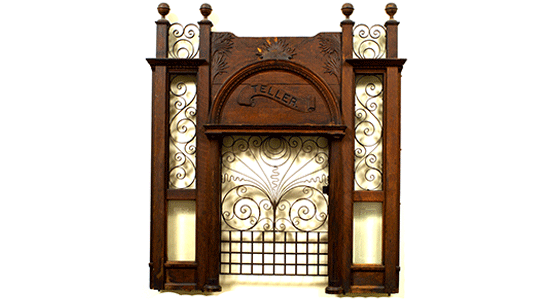
Teller's Window | c. 1927
The National Bank of Fredericksburg
The Planters' National Bank used this teller's window until it moved out of its original building. The National Bank of Fredericksburg secured the window on permanent loan from the family of Edgar M. Young and prized it for the banking traditions it symbolizes.

Advertisement | 1878
Safe Deposit and Trust Company
The Safe Deposit and Trust Company and Mercantile Trust and Deposit Company both used advertising to publicize the security of their safe deposit boxes and suggest new uses for them. In addition to providing impenetrable vaults, these banks developed recordkeeping procedures to document the ownership of property.

Vault Door | 1913
Farmers & Mechanics Bank
By the 1890s, banks installed vaults secured with time-lock mechanisms. Designed by Mosler Safe Company and installed by Peoples Bank of Libertytown in 1913, this vault serves as a testament to the bank's commitment to safety. Presently, this door is on display at 110 Thomas Johnson Drive in Frederick, Maryland.

Ink Blotter | c. 1935
Mercantile Eastern Shore Bank
The Chestertown Bank of Maryland was founded in 1904 to serve the agricultural population of the area. Many community banks promoted their services with advertisements and giveaways. The Chestertown Bank announced its new branches with this ink blotter. In 2004, the bank was consolidated with two other affiliates into Mercantile Eastern Shore Bank.

Award Winning Cow in Bank Lobby | c. 1964
Marshall National Bank
Local farmers were always the most important patrons of Marshall National Bank. For the first half of the twentieth century, county farmers frequently brought their cattle and crops to town for sale. They even led cattle drives through Main Street. Through the 1960s, the bank sponsored livestock shows to promote husbandry. If particularly proud of the winner, the bank displayed the cow in its lobby.
- Scale
- Advertisement
- Benjamin Franklin Check
- O.B. McClintock Burglar Alarm
- Bank Holiday Telegram
- Invoice for Francis Scott Key
- Check Canceller
- Stock Certificate
- Hamilton Fish Passbook
- Counting Room Employees
- Check Canceling Hammer and Block
- Homemakers' Brochure
- Coin Counter
- Employees Keeping Records
- Iron Chest
- ATM Prototype
- Logo
- Football Trading Cards
- Graphotype
- National Currency
- Holiday Dress-a-doll Contest
- National Bank Charter
- Apple Festival
- Parking Sign
- License Plate
- Ground Breaking
- Passbook
- Posting Machine
- Revolutionary War Currency
- Stock Certificate
- Teller's Window
- Advertisement
- Vault Door
- Ink Blotter
- Award Winning Cow in Bank Lobby

Two First Presidents Meeting | March 22, 1791
Bank of Delaware
President George Washington met Joseph Tatnall, widely considered the first industrialist in Delaware and first president of the Bank of Delaware, to thank him for supplying foodstuffs to the troops during the Revolution. The bank commissioned this historical rendering by Robert Goodier to celebrate the 350th anniversary of the state of Delaware in 1988. PNC commissions paintings annually as part of the holiday arts series that provide seasonal depictions of state landmarks.

Label $10,000 Check Written to George Washington | 1796
Bank of Delaware
This check drawn on the Bank of Delaware is equivalent to $135,000 in current money and signed by John Adams. His identity remains elusive, but it is known that he never served as U.S. vice president or president.
Courtesy of the Odessa Historical Foundation
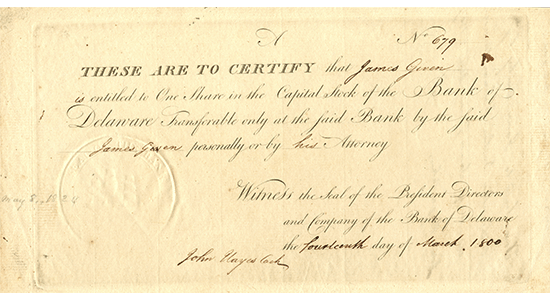
Stock Certificate | 1800
Bank of Delaware
Most early nineteenth-century banks did not issue stock. As a state bank, the Bank of Delaware sold stock giving investors from all over the state a stake in its fortunes
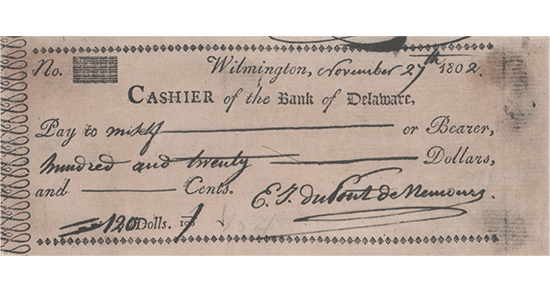
Check Written by Gunpowder Manufacturer | 1802
Bank of Delaware
E.I. Dupont de Nemours, the founder of the gunpowder mill from which DuPont Chemical emerged, demonstrates the Bank of Delaware's connection to the early industrial concerns of the state.

Kennett Turnpike Company Dividend Payment | 1814
Bank of Delaware
Bank of Delaware encouraged investments in the turnpike companies that built roads necessary for commercial success, including the Kennett Turnpike (now Route 52).

State of Condition | 1854
New Castle County Bank
By the 1850s, banks began to record their assets, including deposits in correspondent banks, on a daily basis. This bank, located in Odessa, Delaware, reported total assets of $54,600 at its opening.
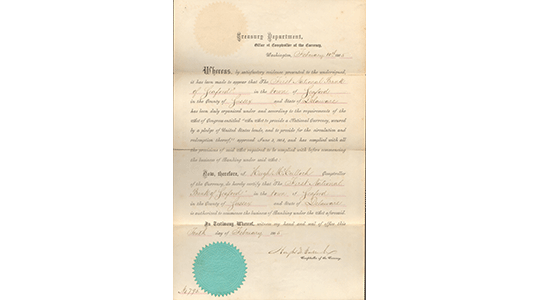
Charter | 1865
First National Bank of Seaford
A group of planters met at Colbourn's Hotel to establish a national bank in Seaford and elected the state Governor William Cannon (term ended March 1, 1865) as its president.

Advertisement Touting New Computers | 1961
Bank of Delaware
One of the first banks to computerize their accounting systems, Bank of Delaware advertised the speed and accuracy of their operations and contracted with local businesses who wanted to use computerized systems.

Common Wealth Awards Presentation | 1983
Bank of Delaware
David McMillan (center), Bank of Delaware president, presented the fifth annual Common Wealth Award to Jessica Tandy (left) and Hume Cronyn (right) for distinguished service in the Dramatic Arts. For more than three decades PNC has administered this award, presented by the Common Wealth Fund, recognizing heads of state, scientists and inventors, explorers, authors, performing artists and activists.
- Two First Presidents Meeting
- $10,000 Check Written to George Washington
- Stock Certificate
- Gunpowder Manufacturer
- Kennet Turnpike
- State of Condition
- Charter
- Advertisement Touting
- Common Wealth Awards

NCB Stock Certificate | 1870
National City Bank
Between 1865 and 1912, John F. Whitelaw was the dominant figure at National City Bank. Before taking over as President in 1889, he worked as a cashier. Whitelaw selected the people associated with the bank. The Board and staff consisted of a small group of personal friends and family members. He also personally selected the depositors, the elite of Cleveland. This NCB stock certificate was issued to Whitelaw in 1870. He retained ownership of his NCB stocks until his death in 1912.

Bank Check | 1883
National City Bank
Banks take security measures with checks, like any financial instrument. In the 19th century, bankers punched holes to mark cancelled checks. Shown here is a National City Bank check dated May 25, 1883

NCB Historical Collection
National City Bank
National City Bank's status as a national bank empowered it to issue currency in its own name. National bank notes included the name of the issuing bank, but the coloring, engraved seals, and images were uniform throughout the nation. Shown here is a $100 bank note, 1906 series

The Workingman's Time Book | 1923
National City Bank
Savings banks not only spoke the languages of their depositors, but they also reached out to them at work and their households. The Dollar Savings and Trust published this time book to encourage workers to track their hours, wage rates, the total weekly payment and amount saved.
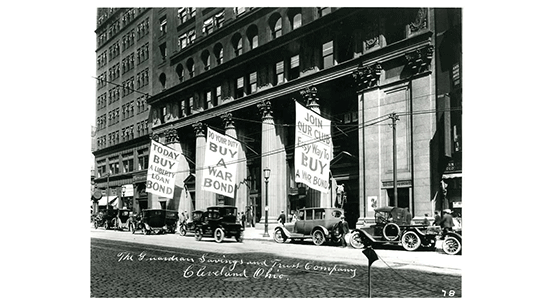
Liberty Loan Support | c. 1917
National City Bank
As the U.S. Army quickly mobilized to assist the Allied forces during World War I, the government launched the Liberty Loan program to finance the costs. Appeals made on both the national and local level emphasized the importance of people of all stations investing in war bonds and their connection to a successful war effort. Banners promoting war bonds outside the Guardian Savings and Trust during World War I.

Bank Holiday Telegram | 1933
National City Bank
Franklin Delano Roosevelt took office in the midst of an economic crisis in March 1933. Immediately, he initiated an energetic program to stabilize the banking system. It included a bank holiday enabling the evaluation of every bank in the nation, and the creation of the Federal Deposit Insurance Corporation. This telegram from the Superintendent of Banks to the Dollar Savings and Trust, Youngstown, announced the bank holiday beginning March 6, 1933.

Wartime Mobilization Ad | 1944
National City Bank
Private investment supplemented the public financing of wartime mobilization. National City Bank fostered private investment in key sectors that later provided the foundation of the postwar economy. Originally appearing in The Wall Street Journal and Business Week, this advertisement brought that message to businessmen nationwide.

Advertisement | c. 1945
National City Bank
Designed to promote deposits from people with modest incomes, this poster illustrates the various sectors, including national security, that benefit from bank investments.
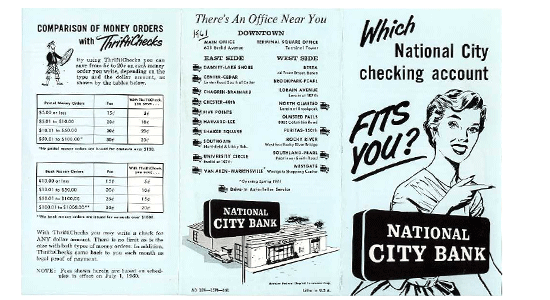
Homemakers' Brochure | c. 1950
National City Bank
In the early 1950s, National City targeted homemakers as a customer base. Their appeal was evident not only in printed matter, but also in their sales pitch. "Home Service Representatives" called on 15,000 homes in Greater Cleveland to introduce women to the banking services offered by National City.
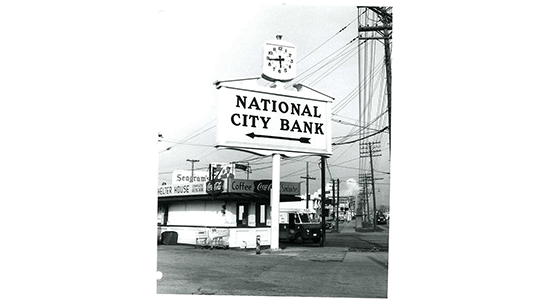
National City Sign | c. 1950
National City Bank
By the 1950s, National City customers could make a pit stop to conduct simple bank business. Drivers could not miss this large sign, pointing to the Brookpark-Pearl branch.

Ground Breaking | 1955
National City Bank
National City promoted itself as the "big and friendly" bank. Several officers break ground at the Babbitt-Lake Shore branch in 1955.

Employees with Check Sorter | 1956
National City Bank
Four National City employees taking a break around an IBM check sorter. These machines simplified the task of verifying and posting checks to the individual accounts.

Auto-Teller | 1961
National City Bank
These auto-tellers provided convenient service and became part of the car-friendly Cleveland landscape. This customer did not even need to open her window to make a deposit with the auto-teller, Carol Richmond, at the Van Aken-Warrensville Office.

Football Trading Cards | 1961
National City Bank
These Cleveland Browns' trading cards reminded young and old sports fans to bank at National City and featured Jim Ray Smith, Ray Rentro and Paul Wiggin, 1961.

Advertisement | 1965
National City Bank
Advertisement directed to bank professionals' projects its workforce as youthful and energetic. National City also took pride in their expertise, nurtured by the most experienced bankers in Cleveland. The ad appeared in Polk's Bank Directory.
- NCB Stock Certificate
- Bank Check
- NCB Historical Collection
- The Workingman's Timebook
- Liberty Loan Support
- Bank Holiday Telegram
- Wartime Mobilization Ad
- Advertisement C.1945
- Homemaker's Brochure
- National City Sign
- Ground Breaking
- Employees with Check Sorter
- Auto Teller
- Football Trading Cards
- Advertisement 1965
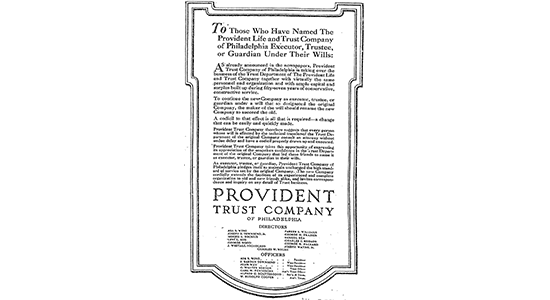
Announcing a Corporate Reorganization | July 31, 1922
Provident Trust
In this advertisement placed in the Philadelphia Inquirer, Provident Trust offers reassurance to its customers that its separation from Provident Life and Trust will not affect its "conservative, constructive service." The message also offers practical advice, providing instructions regarding how to adjust legal documents to reflect the new trustee relationship.

Check | 1869
Provident Life and Trust
Established during the Civil War primarily as a life insurance company, Provident Life and Trust complemented its services as a life insurance company by providing trust and other banking services to its customers.
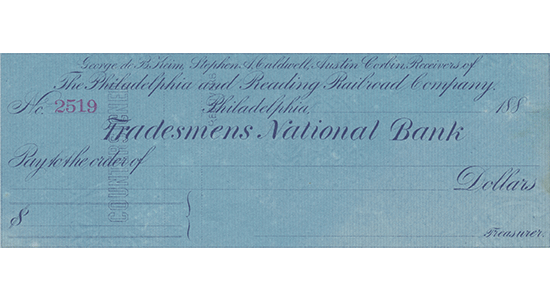
Philadelphia and Reading Railroad
Company Check | From the 1800s
Tradesmens National Bank
Tradesmens was known for its investments in infrastructure, particularly rail lines that serviced the Philadelphia region. Its customer, now remembered as the Reading Railroad, transported anthracite from northeastern Pennsylvania to Philadelphia.

Early Twentieth-Century Bank Floor
Camden Safe Deposit and Trust
It is now difficult to imagine banks as small local concerns as they were in the early twentieth century. Camden Safe Deposit and Trust housed all of its operations in a storefront bank staffed by the four men photographed here.

A Bank President for Mayor | 1911
Tradesmens National Bank
Banks are typically not breeding grounds for municipal politics, but Tradesmens Bank President George H. Earle was exceptional. Known for his ability to rescue companies in crisis and his antipathy towards bossism, Earle resigned from Tradesmens to run for mayor. He won the Republican nomination, though he subsequently lost in a close general election.

A Purposeful Renovation | 1922
Provident Trust
Shortly after its formation, Provident Trust renovated an old weathered brick building at 1508 Chestnut to serve as its headquarters. The exterior and interior of the building helped Provident Trust convey its identification with the personal service and conservative philosophy of nineteenth-century banking.

The Sower
Provident Trust
After separating from Provident Mutual in 1922, Provident Trust took the Sower as a trademark for the bank. This image of the farm worker planting seed symbolized the virtue of a simple and productive life and the possibility of growth from small investments.

Advertisement | c. 1945
National City Bank
Designed to promote deposits from people with modest incomes, this poster illustrates the various sectors, including national security, that benefit from bank investments.

Transfer of Assets | 1931
Market Street National Bank
An armored car and security detail secured the assets of Market Street National Bank as it moved into a new bank facility. A photographer from the Philadelphia Record captured a bank employee carrying $50,000 cash into a new branch on Market and Juniper Streets.

World War II Memorial | 1947
Provident Trust
Provident carved two marble tablets listing eighty-eight employees who had lost their lives during World War II. The tablets are still displayed at PNC Philadelphia headquarters at 1600 Market Street.

Art Display at Headquarters Lobby | 1970
Provident National Bank
This exhibition of Eastern European art collected by Philip and Muriel Berman of Allentown was one of many art programs developed or sponsored by Provident National Bank, an interest that PNC has maintained
Courtesy of the Historical Society of Pennsylvania
- Announcing a Corporate Reorganization
- Check
- Philadelphia and Reading Railroad Company Check | From the 1800s
- Early Twentieth-Century Bank Floor
- A Bank President for Mayor
- A Purposeful Renovation
- The Sower
- Announcing a Corporate Reorganization
- Transfer of assets
- World War II Memorial | 1947
- Art Display at Headquarters Lobby | 1970
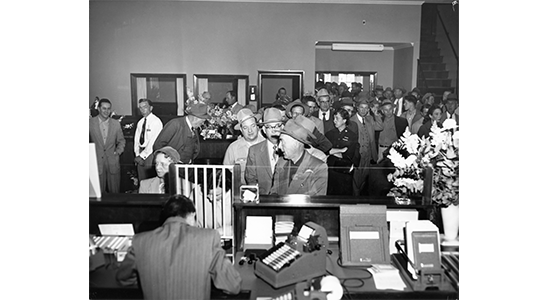
Opening Day | 1954
Planters National Bank
Banks helped farmers to secure the capital necessary to cultivate and harvest their crops. In Eastern North Carolina, Planters National Bank of Rocky Mount understood the special needs of tobacco farmers. It opened this branch in Ahoskie shortly after the town established its own tobacco market.

Sample Stock Certificate | 1990
Centura Banks, Inc.
Centura was founded with the merger of two banks based in Rocky Mount, Planters National Bank and Peoples Bank & Trust. Their new name reflected their 100-year tradition of service and their ongoing commitment to provide quality service to the communities of Eastern North Carolina.

Trademark | c. 1955
Peoples Bank & Trust
From the time it opened, the people of Rocky Mount identified Peoples Bank & Trust with the clock pictured on this check. For more than fifty years, it hung outside the home office and marked the corner where customers could receive friendly and reliable service.

Bookkeeping Department | 1965
Peoples Bank & Trust
Bank employees input ledger entries into Sensitronic, a major breakthrough in branch operations when first purchased by the Rocky Mount bank in 1957. It provided quick access to account information.
- Opening Day
- Sample Stock
- Trademark
- Bookkeeping

Jefferson Check to Robert Leslie
Riggs Bank
Check written by Thomas Jefferson to Robert Leslie drawn on the Bank of the United States, April 27, 1793. Jefferson was serving as the nation's first Secretary of State under George Washington at the time.
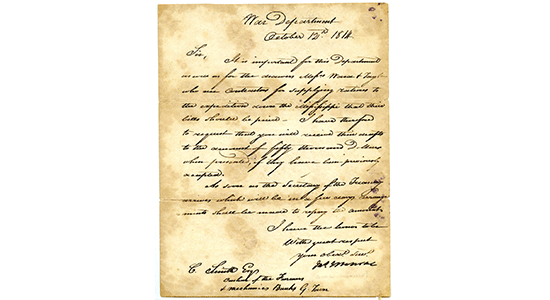
Monroe Letter Requesting Payment for Rations
Riggs Bank
During the War of 1812, Farmers and Mechanics Bank provided banking services to the U.S. Treasury. Written months before the end of this war in October 1814, Secretary of War James Monroe asks the cashier of F & M to honor a government draft payable to contractors who provided soldiers their rations. Monroe also promised that the Secretary of Treasury would repay within a few days.

Tyler Letter to Riggs & Co.
Riggs Bank
The first presidential customer of Riggs & Co., John Tyler instructs the bankers to deposit his monthly salary of $1105.48, February 4, 1843.

Cartes de Visite of ex-President Polk and his wife
Riggs Bank
President James Polk presided over the Mexican War, which Corcoran & Riggs financed by raising $5 million from European merchants and financiers. The presentation of these visiting cards to the Riggs family suggests that ex-President Polk retained a friendly relationship with George Washington Riggs and his family.

Fillmore Letter to Corcoran & Riggs
Riggs Bank
With this note, a page delivered $320 from President Millard Fillmore to Corcoran & Riggs. Fillmore instructed the bankers to use the money to draw up a draft. He also noted that the transaction would overdraw his account, which he would cover within a couple of weeks, May 24, 1850.

Buchanan Letter to George Washington Riggs
Riggs Bank
With less than one month left in office, President James Buchanan asked his friend and chief proprietor of Riggs and Co., George Washington Riggs, to stop by, February 14, 1861.

Lincoln Check to Son Willie
Riggs Bank
Abraham Lincoln wrote this $8 check to his son Willie approximately eight months before his death of typhoid fever, May 17, 1861.

Lincoln Check to Mr. Johns
Riggs Bank
In this check, Abraham Lincoln identified his payee "Mr. Johns (a sick man)" by his condition rather than his full name. Tellers cashed this check, yet Mr. Johns did endorse this check and left no clue regarding his identify, August 28, 1861.

Garfield Check
Riggs Bank
President James A. Garfield wrote this check to Mary McGrath less than two months before he was shot, May 25, 1881. He died on September 19, having served for just six months and fifteen days.
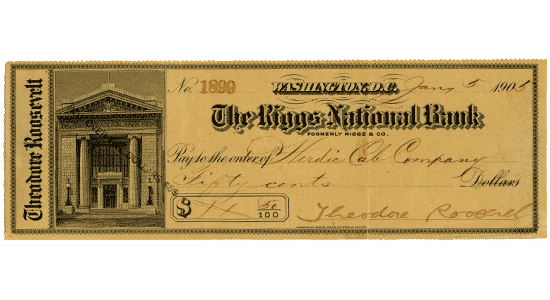
T. Roosevelt Check to Cab Company
Riggs Bank
Theodore Roosevelt wrote this check to Hedric Cab Company shortly after Riggs National Bank opened its headquarters at the Fifteenth and Pennsylvania location, January 5, 1905.

Taft Check to Department Store
Riggs Bank
Check written by William Howard Taft to Woodward & Lothrop, the leading department store in Washington, June 19, 1919.

Eleanor Roosevelt Check
Riggs Bank
Eleanor Roosevelt wrote this check to cash during Franklin Roosevelt's tenure as Assistant Secretary of the Navy, five months before he contracted polio, March 10, 1921.

Photo of Truman's Inaugural Parade
Riggs Bank
Wearing a top hat, President Harry S. Truman passes Riggs National Bank on Pennsylvania Avenue, January 20, 1949. Truman maintained his account at Riggs National Bank until 1962, nearly ten years after he left Washington.
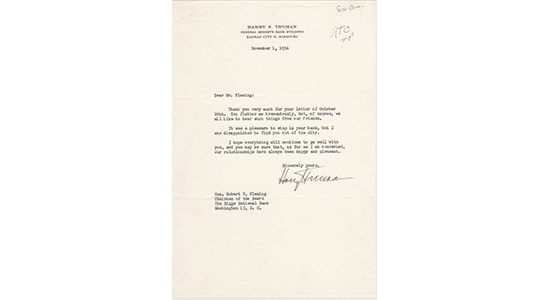
Truman Letter to R. Fleming
Riggs Bank
President Harry S. Truman lets Robert V. Fleming know that he stopped by the bank and expressed his regret at not finding him at the bank, November 1, 1956. Like his predecessor, Truman valued the advice and friendship of the Riggs National Bank President and Chairman.
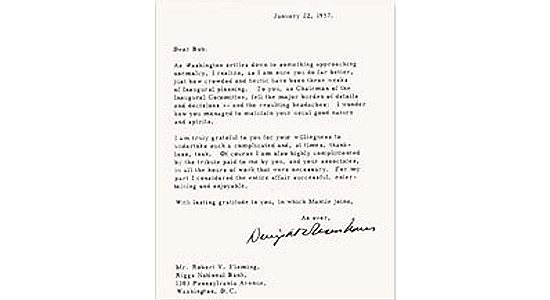
Eisenhower Letter to R Fleming
Riggs Bank
President Eisenhower thanks Riggs National Bank President and Chairman Robert V. Fleming for his work as Chairman of the Inaugural Committee, January 22, 1957. Eisenhower and Fleming held each other in high esteem. They played golf together, watched the Senators on opening day, and attended informal and formal dinners together.

Nixon Check to Phone Company
Riggs Bank
Check written by Vice-President Richard M. Nixon to pay his monthly phone bill with Chesapeake & Potomac Company, November 14, 1959.
- Jefferson Check
- Monroe Letter
- Tyler Letter
- Cartes de Visite
- Fillmore
- Buchanan
- Lincoln Check
- Lincoln Check to Mr. Johns
- Garfield Check
- T. Roosevelt Check
- Taft Check
- Eleanor R Check
- Photo of Truman
- Truman Letter
- Eisenhower Letter
- Nixon check

